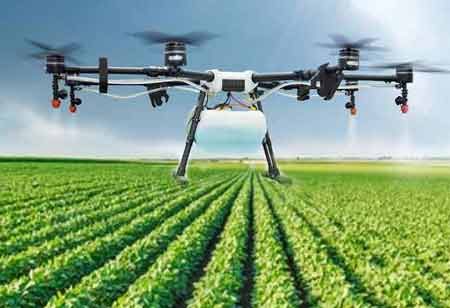Thank you for Subscribing to Agri Business Review Weekly Brief
Agricultural Robotics: The Top 5 Applications
Agriculture is evolving as a high-tech job with the help of technology, with many robots and drones involved.

By
Agri Business Review | Wednesday, September 28, 2022
Stay ahead of the industry with exclusive feature stories on the top companies, expert insights and the latest news delivered straight to your inbox. Subscribe today.
Engineers strive to create robotic models that stand out and help farmers in their different applications.
FREMONT, CA: Agriculture is evolving as a high-tech job with the help of technology, with many robots and drones involved. Engineers strive to create robotic models that stand out and help farmers in their different applications.
The growth of robotic applications in the agriculture industry is fast, and with fantastic results, it is rapidly turning into part of the most significant agricultural revolutions.
1. Crop Seeding
Many food plants begin their lives as seeds in the ground. Traditionally, seeds are dispersed through a tractor-mounted "broadcast spreader." This scatters numerous seeds throughout the field while the tractor drives constantly. However, robotics and geo-mapping are united in autonomous precision seeding. First, a map is created that depicts the soil properties at each point in the field. Then, the tractor, equipped with a robotic seeding attachment, spots the seeds at accurate depths and locations.
2. Fertilizing and irrigation
Irrigating and fertilizing crops has customarily been an inefficient use of water. Robot-Assisted Precision Irrigation saves water by centering on specific plants. Ground robots navigate autonomously between crop rows, pouring water directly at the base of each plant.
Robots also have an advantage in entering areas that other machines cannot.
3. Crop Weeding and Spraying
Spraying pesticides and weed killers onto fields is wasteful and harms the environment. Robots are a far more effective method.
The idea of micro-spraying has the potential to decrease the amount of herbicide utilized in crop production. Using computer vision technology, micro-spraying robots locate weeds and spray a correct pesticide drop upon them.
4. Autonomous Tractors
Because humans typically drive tractors, the robots are designed to adapt to the speed at which the human is driving. Still, fully autonomous tractors are attaining popularity. There is also an increasing trend toward autonomous follow-the-leader tractors, wherein tractors autonomously follow human-driven combine harvesters to gather grain.
5. Picking and Harvesting
Harvesting crops such as corn, barley, and wheat is simple. It is likely to do so with a combine harvester, which, like a tractor, can be automated. Other crops, like soft fruits, are harder to harvest because they require manual dexterity. The "Clever Robots for Crops" project works on several harvesting applications, comprising apple harvesting, grape picking, and sweet pepper picking.
With the participation of central authorities, robotics in agriculture and farming, especially dairy farming, can reach new heights in the future.





